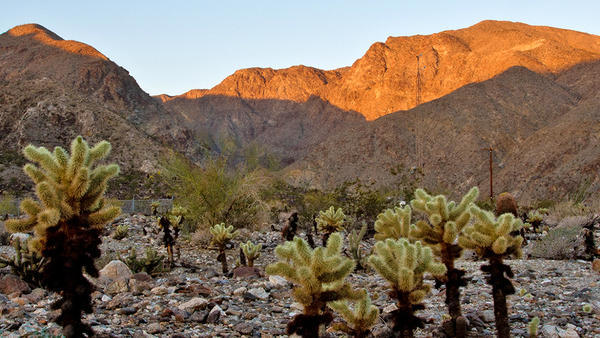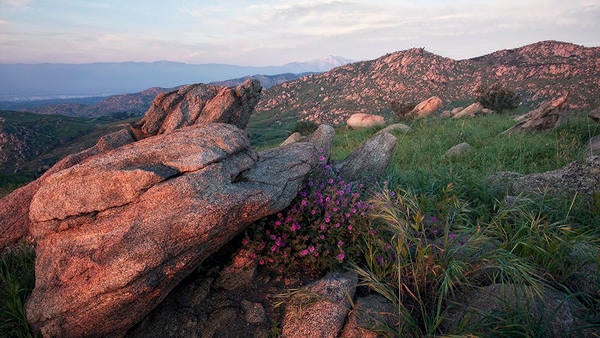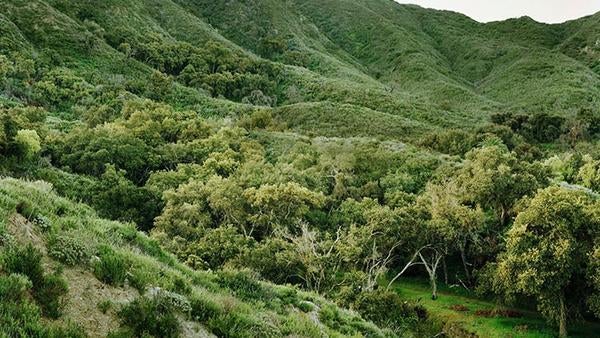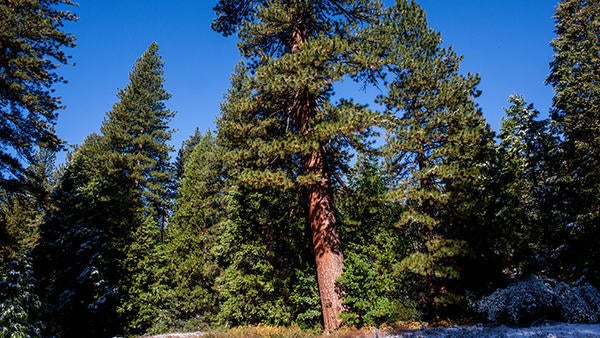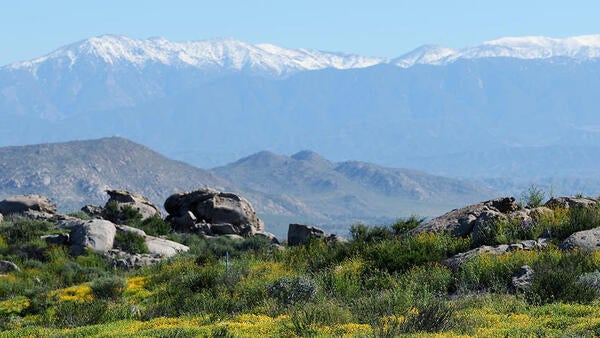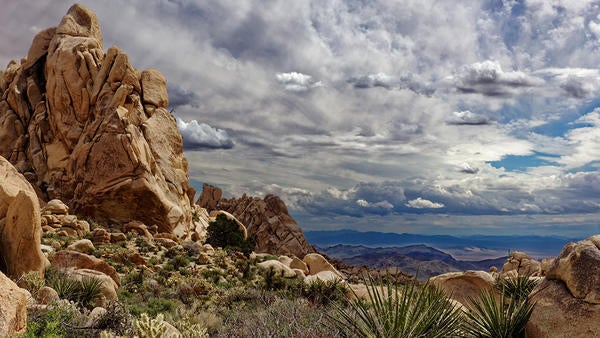The University of California maintains more than 42 Natural Reserves distributed throughout the state. The establishment of the system-wide UC Natural Reserve System was due in large part to the efforts in the 1940s and 1950s of Professors Ken Norris of UCLA and UC Santa Cruz and Wilbur Mayhew of UC Riverside, along with many others, who became concerned with the ever-increasing disappearance and destruction of their field sites. Originally called the "Natural Land and Water Resources System," the Natural Reserve System was formally approved by the UC Regents in 1965. This act ensured that teachers and researchers will continue to have access to undisturbed natural habitats into the future.
Through the College of Natural and Agricultural Sciences, UC Riverside administers five major reserves that have research facilities and permanent staff; these are the Deep Canyon, Granite Mountains, Motte, Emerson Oaks and James Reserves. Another four smaller reserves are also part of the UCR reserve network (Box Spring, Oasis de Los Oso, Old Woman Mountains and Sacramento Mountains). Together they form a considerable portion of the University of California's total Natural Reserve System. Within the nearly 11,400 hectares (28,000 acres) included in the UC Riverside-managed reserves is a broad representation of Southern California's flora, fauna, and major ecosystems.
In essence, the natural reserve system is a 'library' of a wide variety of natural habitats throughout California. These lands are an invaluable outdoor laboratory used by scientists throughout the world. In addition, many endangered or diminishing species are protected from the urbanization occurring in Southern California on "habitat islands" preserved within reserve boundaries.
These reserves are protected from development and other major perturbations to keep the environment and ecosystems as intact as possible. Unlike parks, they are not open to the public except during special events, and are specifically designated for research and teaching. The reserves serve as field stations with laboratory equipment, sensors, communications infrastructure, adaptable workspaces, and accommodations.
If you are interested in using any of the NRS sites administered by UCR, please contact the reserve directors listed below, or submit an application at rams.ucnrs.org :
UCR Natural Reserves
Dr. Kimberly Hammond, Director
Office: (951) 295-3920
Fax: (951) 827-4286
3318 Spieth Hall
Email: kimberly.hammond@ucr.edu
Dr. Peter Atkinson UCR Delegate
Dean, UCR College of Natural and Agricultural Sciences
Boyd Deep Canyon Desert Research Center
Located five miles south of Palm Desert, two hours east of the UCR campus, the 16,873 acre facility is located in the drainage system below the Santa Rosa Mountains. Facilities include a pair of laboratories, housing facilities for 14 researchers, additional remote facilities, teaching areas, and campgrounds for classes. Accommodations for up to 35 are available.
Dr. Chris Tracy
Resident Director (951) 827-3655
Email: tracyc@ucr.edu
More information Deep Canyon website
Box Springs Reserve
Located adjacent to the UCR campus, the 160 acre reserve hosts 19 species of reptiles, 16 species of mammals, including the pacific kangaroo rat, mountain lion, and mule deer, and 85 bird species.
Dr. Ken Halama, Director
Phone: (951) 657-3111
Fax: (951) 657-5443
Email: kjhalama@ucr.edu
More Information
Emerson Oaks Reserve
Located in the Temecula Valley, about 50 miles south of UC Riverside, in a transitional zone between the California Coast and Colorado Desert, the 255 acre reserve features a variety of diverse habitats.
Dr. Joseph Messin Assistant Director
Phone: (951) 657-3111
Fax: (951) 657-5443
Email: joseph.messin@ucr.edu
https://motte.ucr.edu/
More information
James San Jacinto Mountains Reserve
A 29-acre reserve located 50 miles east of Riverside near Idyllwild. It is located at the lower end of Hall Canyon on the western flank of Black Mountain. It hosts a wide variety of plant, animal, and insect communities.
Dr. Casey Woodall
Resident Director
(951) 827-6835
Email: casey.woodall@ucr.edu
Motte Rimrock Reserve
A 715-acre reserve located on the western edge of the Perris Valley. Coastal and desert influences intermingle at the site, creating an unusual mix of habitats. Six seasonal springs add to the diversity of the habitat.
Dr. Ken Halama, Director
Phone: (951) 657-3111
Fax: (951) 657-5443
Email: kjhalama@ucr.edu
More information Motte Website
Jack and Marilyn Sweeney Granite Mountains Desert Research Center
Located in the Granite Mountains of the eastern Mojave Desert about 80 miles east of Barstow, the 9,000 acre reserve has a variety of environmental and archeological sites. Over 460 species of vascular plants, 2 amphibian, 34 reptile, 138 bird, and 42 mammal species call the area home.
Dr. Jim André, Director: granites@telis.org
Dr. Tasha La Doux, Assistant Director: gmdrc@ucr.edu
Tel: (760) 733-4222 | Fax: (760) 733-9931
More information
For more information about the UC system-wide natural reserves, please visit their website:

